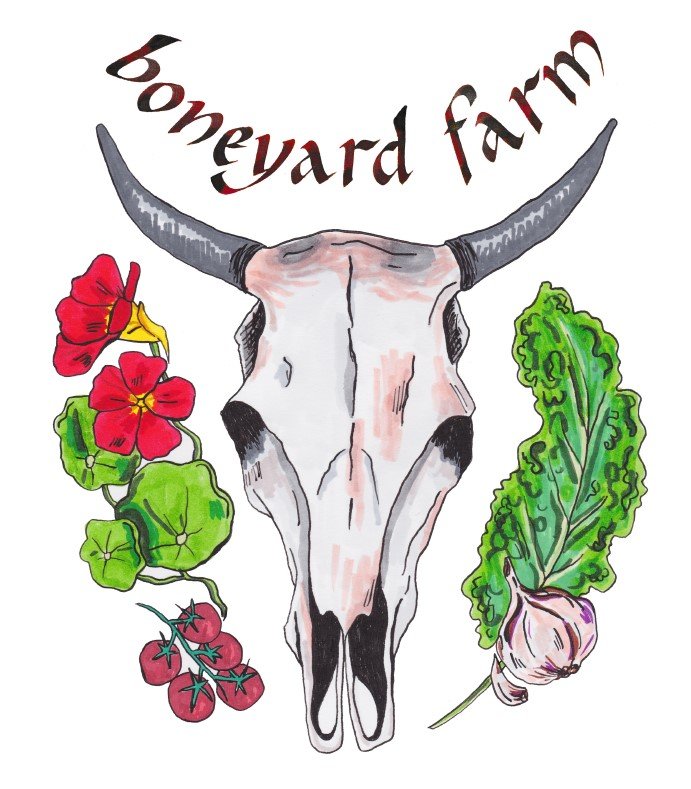D A T A
Our kiddos fell in love with a short series of early reader chapter books this year. The DATA Set books, by Ada Hopper, were a big hit with my science-loving dudes. DATA, in the books, stands for “Danger! Action! Trouble! Adventure!” and while I wish for your sake that this blog post was destined to be that exciting, I do admittedly get pretty animated about data.
We spend a lot of time weighing, counting, recording, tracking, and mapping things here at Boneyard Farm. Then I shove those hard copies into a “data to enter” folder and sit down at a computer, usually after the hustle of the season is over, and consolidate it all into spreadsheets. Note: I am trying to get better at tracking all this data during the actual growing season, because I think that could help a ton with on-the-ground production.
One of the main reasons I enter so much data from a growing season is, simply, because I have to. (It isn’t just because I’m a little Type A. Although that is probably true too.) Our Vermont Organic Farmers (VOF) organic certification for our vegetables requires recordkeeping and monitoring. I get visited by an inspector each year who will, among many other things, sit down at my dining room table and randomly choose a crop, then have me go through that crop’s lifecycle and recount all the info I can on it– where did we buy the seeds (and can I show them the receipt that signifies it was certified organic?)?, how much did we seed?, into what substrate?, when did we transplant it?, where?, when did we harvest it?, how much did we harvest, total? (and is that a logical/reasonable expected harvest, based on average yields for that crop? Am I fudging my records? Cheating somehow?), how and where did I sell the crop? By maintaining records and maps on our rotational grazing, we can qualify for some grant funding through the Vermont Agency of Ag.
This work is much easier to do if we’ve kept our ducks somewhat in a row throughout the season, and I’ve learned over a couple of years to try from the start to be as detailed and organized as I can. (It helped a lot to have worked on larger, more established farms before starting my own.) Or maybe as detailed and organized as I need to be… because it’s not worthwhile to write down every single thing, and my time is better spent elsewhere, if I’m tracking details that won’t help me down the road. What data is worth capturing? Do I have to keep an eye on all these metrics every single time, or collect “snapshots” to extrapolate useful information?
So… there are a lot of internal recordkeeping benefits as well. What kind of info, beyond VOF compliance and grazing grants, actually helps us to be better producers? What can we learn from keeping track of all the ins and outs? We know more about how long things take. We can figure out how much we can reasonably assume to harvest from a vegetable crop, based on our actual records and not some aspirational data from a different farm. (Example: In 2024, we harvested 542 heads of lettuce from 490 feet total— this doesn’t mean we planted exactly that much, but that’s what was harvestable and needed. I could dig in and see when each of those heads were harvested, which varieties did best, which beds had the highest yield, when customers seem to buy the most lettuce, etc.) Being able to do these calculations means that if we want to expand our CSA or go hard on one particular vegetable, we know how many more bed feet we need to dedicate to it. We can decide if a particular crop is worth the space in our limited market garden setup. Possibilities are kind of endless, once you dig in, if you’ve collected all the data along the way. On the management intensive grazing end, we can predict how often we’ll have to move our cows and sheep based on forage quality, paddock size, and time of year, specific to our actual farm and animals. We can calculate costs and prices for different products, so that we’re charging a fair price for our goods.
All this is a lot of work. I’m getting a bit better at it, but I still don’t have (make) enough time to do as much as I want each winter. But I absolutely understand how important it is, and how useful it can be. If each year I can improve a little bit on this type of work and planning, then each year we’ll be a little better at farming. One of many ways we grow as we go. Honestly, these types of challenges are something that keeps me so invested in farming— it is never boring, and different every year. There’s always an opportunity to do a better job.
